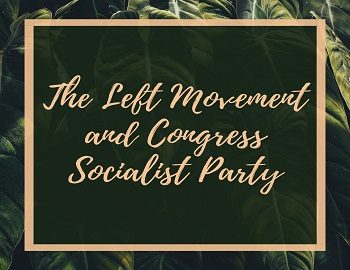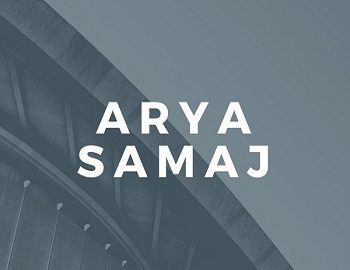Table of Contents
The Left Movement and Congress Socialist Party:
Left Movement:
The Leftist movement in India grew as a result of the development of modern industries, the acute economic distress between the two world wars and the success of the Bolshevik Revolution in Russia. Some Indian intellectuals working within and outside India decided to establish the Communist Party of India. Manabendra Nath Roy (actual name Narendranath Bhattacharya) visited Russia and came in contact with the Russian Communist Party. He also attended the Second Communist International held in Moscow in July-August 1920 and shortly after he founded the Communist Party of India in Tashkent in October 1920. Between 1921 and 1925, various formal Communist groups were established in many parts of the country and finally in December 1925, Satyabhakta organized an All-India Conference of the Communists at Kanpur. This Conference met under the Presidency of Singaravelu Chettiar, a Communist leader from Madras. The convening of this Conference is regarded as the formal beginning of the Communist Party of India in 1925.
The 1920s also witnessed the growth of peasant workers and other left organisations. In the first half of 1920, there were some 200 major labour strikes in the country. The ALL-India Trade Union Congress also held its first session in Bombay in October 1920, under the presidentship of Lala Lajpat Rai. Soon the Left influence was also felt on the INC. Jawaharlal Nehru and Subhas Bose laid the greatest emphasis on socialist ideas. The growing socialist influence on the INC later on divided the Congress into “Leftist” and “Rightist” camps. In the early 1930s Socialist groups were formed by the Leftist Congressmen in provinces like Bihar, United Provinces, Bombay and Punjab. The second phase of revolutionary terrorism, which also progressed between 1922 and 1928, had very strong socialist leanings.
Congress Socialist Party (CSP):
Some Congress leaders were not satisfied with Gandhian methods of Protest. They were advocating a change of Socio-economic front as well. So such leaders with socialist leanings arranged a conference in Nasik Jail in 1934. Then the Congress Socialist Party came into existence. In this party, Acharaya Narendra Dev, Jai Prakash Narayan, Acyuta Patwardhan, Minu Masani and Ashok Mehta. played a significant role. Their aim was to work within the congress, but for twin objectives- ‘Independence’ and ‘Socialism’. They believed that Congress is a true all India party to fight against imperialism, but it is dominated by the capitalists and zamindars. They wanted to influence the Congress party with socialist ideas and to adopt a policy favourable to the peasants and workers. The goal of the transformation of Congress was seen in the transformation of leadership as well. Initially, it meant replacing the leadership at the top. But it was soon found unrealistic to displace Gandhiji. So CSP worked to evolve composite leadership at all levels. It was to throw up alternate left leaders from the bottom to the top. Matters came to head in 1939 and 1940 sessions, but CSP shields away from splitting the Congress.
Limitations of Socialist Movement in India:
- The leftist parties continued to fight against congress on wrong issues, they were fighting not on the issue of ideology but rather on the issue of programmes.
- Even during the time of crisis the different socialist and communist organisations failed to make a joint front. For example- Tripuri Crisis.
- Some socialist organizations like CSP were not ready to antagonise congress. Whenever there was a conflict between loyalty to the Congress and loyalty to socialist ideology, CSP always selected the former.
- The CPI unlike CPC (Chinese Communist Party) failed to understand the ground realities in India.
Contribution of Left Movement:
But still, we can say that leftist parties contributed a lot to Indian politics. As we know they redefined the meaning of national movement and that of freedom. For them, freedom did not simply mean political freedom but also economic and social freedom. Secondly, under the influence of leftist ideas, congress adopted some progressive economic programmes in the Karachi session of 1931, Lucknow session of 1936, Faizpur session of 1937 and even in the Congress manifesto in the elections of 1937. National Planning Committee (1938) and All India Student Federation was inspired and influenced by them. All India State’s People Conference was supported by them. All India Women Conference was formed with their help.

![Causes of French Revolution [1789] 2 Causes of French Revolution](https://gkscientist.com/wp-content/uploads/2021/05/Causes-of-French-Revolution.jpg)







Comments (No)